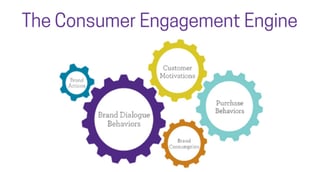A bit of history on the funnel
At some point between 1889 and 1925 the AIDA model was created by Elias St Elmo Lewis’. He was an Ad man and academic whose strategic advertising approach implies that people react to advertising communications in the unidirectional trajectory that starts with Attention, followed by Interest, and then Desire, before finally taking Action. The AIDA model subsequently birthed several iterations including the Hierarchy of Effects Model, which, in a similar linear fashion, describes how consumers firstly become aware of advertising communications before seeking knowledge about the product/ service/ brand. Finding himself emotionally involved, the consumer then moves into liking the brand. At this point, as long as the advertising communication is done right, the model suggests, that, while still emotionally driven, the customer begins to prefer the product/ service/ brand. Only after that point, is his behavior altered as he moves into the fifth and sixth stages conviction and purchase.
The AIDA model was originally designed to represent the stages through which a salesperson should take a prospect but was later adopted as an advertising model for persuasive communication. The idea of post purchase was later considered and introduced in around 1911 when London School of Economics’ Arthur F Sheldon included ‘permanent satisfaction’ as the final step, creating the AIDAS model. For more than a hundred years, marketing and communications practitioners relied on this general approach in the creation of their strategies. With the application of technology to marketing, the AIDA philosophy continued to be challenged by other concepts like the AISDASLove model (Attention, Interest, Search, Desire, Action, Like/dislike, Share, and Love/ hate). This model implied that after a consumer becomes interested, he actively searches for more information before the product becomes a desire, after which action is taken and so on. Today, many organisations and academics adapt the original model to suit their individual needs based on their own research of their customers' behaviours.
In today's world, it really doesn't matter whose model you use, what matters is that you implement a strategy that shapes the perception of your consumers by creating meaning for them around your product or brand. This is done by informing and persuading, perhaps through education, entertainment, and social inspiration.
The Content Funnel
Buzzing in the marketing world of today is the concept of the Conversion Funnel. This concept, rooted in the foundations of persuasive advertising and structured similarly to the AIDA model looks at the consumer's experience from a digital perspective, focusing on four general quadrants (of course different organizations may add or remove parts, but this is the main idea).
(1) Getting and interacting with consumers (getting consumer traffic)
(2) Converting traffic
(3) Securing purchase and
(4) Retaining customers.
Each individual responds differently to our communications. The impetus of the conversion funnel is to convert a ready consumer into a paying customer. We as marketers cannot change a person’s values, but we may succeed in transferring a person’s negative attitudes toward a product into a positive one. Saint Joseph’s University Marketing Professor Michael Solomon argues that the use of drama in advertising, perhaps as with this Digicel commercial and this Google commercial, is effective at changing consumers’ negative attitudes. He also finds that humorous ads, perhaps like this one from Universal Cereals, are effectively used when consumers already have a positive image of the brand. Taking this into consideration, the strategic marketer should not only determine the function of each stage of the funnel but should also decide on what to focus on and how to approach it creatively.
The figure below attempts to explain how the conversion funnel can be approached as you use it to build your content marketing strategy. To help explain, I used the example of an artist releasing a music track:
|
Function |
Focus on |
Creative approach (What should be in your content calendar) |
Music Release Example |
| Content to get traffic |
Focus on providing information, for example, the functional benefits, attributes, and features. |
Product advertisements can be used here. Your content calendar can include content about benefits, features, and attributes of the product |
A pre-release interview of the artist explaining what to look out for in the video and why it’s exciting |
|
Content to convert traffic |
Focus on persuasion. Show that your brand or product understands the needs of the target. |
Slice of life and lifestyle content, demonstrating how the brand and product can be integrated into the consumer's life, is useful here. Comparative ads work here as a good part of your content calendar. Influencers, selected correctly are invaluable at this stage |
Post-release interviews with the artist highlighting a social cause, issue or something that the target can use to relate to the music on a higher level. Jay-z did this well in his 2017 album release 4:44 |
| Content to secure purchase | Focus on educating, entertaining and inspiring the target | Humour, drama, how to’s, purchase guides, even estimates work well here. | Post-release interviews with the artist highlighting a social cause, issue or something that the target can use to relate to the music on a higher level. Jay-z did this well in his 2017 album release 4:44 |
|
Content to retain customers |
Focus on reducing purchase dissonance and encouraging/ incentivising positive word of mouth |
FAQs and "How I use my…" type content, demos, and follow ups are applicable here to allow the consumer to feel supported in his/her purchase. |
After purchasing the track, the consumer would be happy to receive an email with track lyrics or even a personalised thank you from the artist |
Of course these tactics are not hard and fast and can be used differently at different stages. After you’ve developed your framework, your next step is to begin populating your content calendar for each social feed and deciding which influencers work best for the brand.
What’s new?
The Spiegel Research Center at Northwestern University, argues that the linear thinking associated with only considering the content funnel isn't relevant in today’s hyper-connected world. Their most impactful point on this is that consumers are influenced by more than just communications that come from the brand. In fact, consumers are influenced by external blogs, friends’ tweets, observing other consumers using the product and a myriad of other things. They’ve coined the Consumer Engagement Engine that recognizes that consumers of today are not passive recipients of your content, but rather co-creators and active community members.

As you go about building your content strategy, consider your communities as living organisms that create content on their own, ask questions, share and of course observe.
In my next article, I'll dig more deeply into Influencer Marketing and its use in the digital world.
Want to take your marketing career to new heights?
Join the Lok Jack GSB International Master of Strategic Marketing programme for their September 2017 Intake!
References:
https://www.singlegrain.com/blog-posts/content-marketing/content-marketing-funnel-using-different-types-content/
http://contentmarketinginstitute.com/2017/04/funnels-content-marketing/
http://mediashift.org/2014/11/when-a-brand-becomes-a-publisher-inside-red-bulls-media-house/
https://www.pinterest.com/search/pins/?rs=ac&len=2&q=inspire%20me&eq=inspire&etslf=6231&term_meta[]=inspire%7Cautocomplete%7Cundefined&term_meta[]=me%7Cautocomplete%7Cundefined
https://marketinginsidergroup.com/content-marketing/what-is-thought-leadership-and-why-do-you-need-it/
http://contentmarketinginstitute.com/2016/05/secret-content-marketing-roi/
http://contentmarketinginstitute.com/2015/06/measure-content-marketing-roi/
http://www.webinknow.com/2013/05/building-inbound-marketing-assets-are-not-marketing-expenses.html
https://www.entrepreneur.com/article/253044
https://hbr.org/2016/03/branding-in-the-age-of-social-media
http://management-update.org/uploads/dokumen/5-1-e.pdf
http://www.learnmarketing.net/hierarchy_of_effects_model.html
http://yourbusiness.azcentral.com/three-main-advertising-objectives-1412.html
http://www.bizible.com/blog/how-your-b2b-marketing-funnel-works
http://spiegel.medill.northwestern.edu/Consumer-Engagement-Engine-Infographic/
http://spiegel.medill.northwestern.edu/
https://en.wikipedia.org/wiki/E._St._Elmo_Lewis
https://www.youtube.com/watch?v=Wkvrrz0_LOQ


